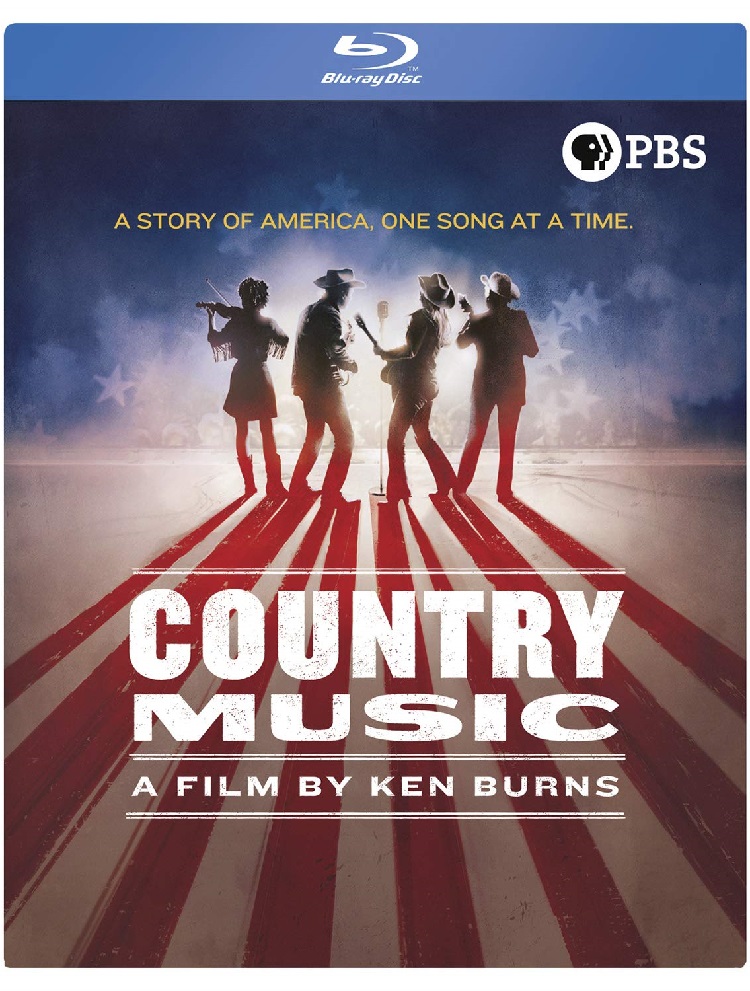
Ken Burns’s latest examination of the fabric of the United States sees him focus on another musical genre, Country Music, in an 8-episode, 16-hour documentary that airs on and streams through PBS, beginning tonight. The story is narrated by Peter Coyote and supplemented by a wealth of interviews ranging from country artists, giants in the business like Dolly Parton and Kris Kristofferson to lesser-known artists keeping the spirit alive like Ketch Secor from Old Crow Medicine Show and Rhiannon Giddens; from those who lived through it like session musicians and radio DJ Ralph Emery to the children and grandchildren of beloved musicians. Much like Shelby Foote served as a frequent contributor to Ken Burns’s The Civil War, Marty Stuart performs the same role here, sharing stories, offering opinions, and in addition, playing instruments.
Episode One “The Rub” (Beginnings – 1933)
Harlan Howard declared, “country music is three chords and the truth.” The music might be the most American of genres because it is a melting pot of influences and instruments. The fiddle from coming from Europe, the banjo from Africa, the guitar from Spain. Old melodies from folk songs were updated with new lyrics and the songs that had the greatest success were the most accessible for listeners. Contemporary music from the region, such as jazz, blues, and gospel, also influenced the musicians.
The story of Country Music isn’t just about the musicians. Record executive Ralph Peer was an instrumental figure. While the industry focused on recording folk music for immigrants from their homeland, he had the foresight to see the value of homegrown music recording Mamie Smith’s “Crazy Blues” for the African American market and what is credited as the first country music recording, Fiddlin’ John Carson‘s “Little Old Log Cabin In The Lane.”
Peer went out to Bristol, TN to record Pop Stoneman, who suggested there was a lot of talent to be found in the area. He was correct as Peer discovered and recorded two acts that influence so many that came after: the Carter Family and Jimmie Rodgers. Finding an audience was just as important as finding an artist.
Radio stations sprung up and incorporated country music radio shows. The focus on “country” led some urban acts to take on Southern personas. For those not as well versed in the early days, the film introduces Uncle Dave Macon and DeFord Bailey, and reveals how the Grand Ole Opry came to fruition.
The episode concludes at Rodgers’s death. Thankfully, the project has been in the works for a while so death hasn’t kept folks like Merle Haggard and Ralph Stanley from taking part. Also, good to see Jazz host Wynton Marsalis offers his thoughts as well.
Episode Two “Hard Times” (1933 – 1944)
Americans had to deal with the Great Depression and World War II but country music helped people soldier on. After the loss of Rodgers, others stepped into the spotlight, expanding the genre across the country and expanding country music with new influences and influencers. As the years go by, Burns is able to use more audio and video of the musicians.
Gene Autry, followed in Rodgers’s footsteps and then got into movies. His first starring role was in The Phantom Empire, which looks to be a blend of western and science fiction a la Flash Gordon/Buck Rogers. The clips of Autry versus a robot will make one want to seek it out. All the studios but MGM wanted a singing cowboy. The Sons of the Pioneers contributed many songs and when Autry wanted more money from the studio, they went with Leonard Slye, a member of Sons of the Pioneers who acted alongside Autry. The studio got him to change his name to Roy Rogers, and both men did pretty well.
New parts of the country were being heard from. Texan Bob Wills created a big band version of country music, dubbed “western swing,” that got folks dancing. Kentuckian Bill Monroe would be credited with starting bluegrass. And new parts of the country were being reached. The National Barn Dance on WLS was transmitting out of Chicago. Dr. John Brinkly, who offered help to men’s virility through goat testicles transplants (yes, you read that right), set up a radio station across the Texas border in Mexico and was able to reach as far as New York. The Grand Ole moved into the Ryman Auditorium in 1943. Not only did it showcase musicians like Roy Acuff but also comedienne Minnie Pearl.
World War II had an impact on the growth of country music. Musicians entered the war and their experiences, at home and abroad, were expressed in their songs. Also, soldiers from other states got to hear country music on Armed Forces radio and from their peers. The episode wraps with the war over and new stars on the rise.